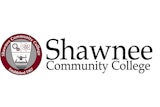Accelerate academic transitions, extend navigational supports and serve as career bridges are three principal recommendations of a new resource guide focused on aligning the K-12 system and community colleges for student success.
 Annie Phillips
Annie Phillips
Released by the Association of Community College Trustees (ACCT), the American Association of Community Colleges (AACC) and Education Strategy Group (ESG), the report “Aligning for Student Success: How Community Colleges Work with K-12 to Improve College and Career Outcomes” comes at a time when more than 40 states have incorporated college- and career-focused measures into their K-12 accountability systems and institutions are increasingly partnering with industries to prepare students for the workforce.
“Community colleges have been providing workforce education for decades,” said AACC president and CEO Dr. Walter G. Bumphus. “Now, more than ever, they are working to align educational and training programs for students with the needs of local business and industry. Those efforts are a bridge between students, education and jobs and are critical to ensuring that Americans are able to meet the needs of the 21st Century global workforce.”
Matt Gandal, founder and president of ESG, added that ACCT, AACC and ESG came together to develop the report to assist community college leaders in working collaboratively with K-12 school systems to boost enrollment and implement high-impact strategies that close college preparation gaps and increase student success.
Community college and K-12 leaders can first begin to align their efforts by providing opportunities for K-12 students to accelerate their learning through early postsecondary opportunities like dual enrollment, or to catch up to a college-ready level through senior-year transition courses, the guide said.
Because two-year institutions serve a “substantial majority” of first-generation students, low-income students and underrepresented undergraduates, institutions must prioritize putting students into the appropriate courses relative to their academic and career goals and help put them “on a path toward persistence and completion,” the report said.
Suggestions to make these efforts actionable include chairing a joint process between high school and postsecondary faculty to develop high school transition courses; using data to identify gaps in dual enrollment participation and build complementary student support services in addition to postsecondary opportunities; enacting a holistic process for placement purposes; and hosting ongoing community discussions with K-12 districts to develop a shared understanding of college readiness and success.
Annie Phillips, an ESG associate supporting the organization’s P-20 alignment projects, noted that the colleges interviewed for the report all mentioned presidential and trustee support around digging into the data to make informed policy and program decisions for student success.
“It starts with leadership prioritization,” Phillips said of building institutional data capacity.
Further, extending navigational supports down into the K-12 system could better help students make informed college and career decisions, according to the report.
Miami Dade College (MDC), for example, developed a three-tier advising structure in partnership with local K-12 districts. Shark Path, MDC’s pre-college advising program, offers on-site advising to seniors in 97 high schools and advisers help students navigate the college-going process and facilitate workshops on financial aid and career selection, among other supports. When those students enroll at MDC and participate in new student orientation, their adviser meets with them to discuss course selection and their pre-college assessments.
Additional “promising practices” to extend navigational supports include connecting guided pathways to the high school level and mapping transfer and career opportunities for students throughout their matriculation from high school to a four-year institution or the workforce, the report said.
K-12 and community college leaders can implement these efforts by co-developing an aligned advising framework starting in high school; convening faculty experts from both sectors to “rethink” how 9-14 course sequences align with student academic and career aspirations; and host joint board meetings with K-12, two- and four-year leaders to “sustain transparent and accelerated pathways” to a bachelor’s degree, the report suggested.
Highlighting community colleges as the “workforce engines” of their communities, the report’s third recommendation honed in on community colleges serving as a bridge to the workforce for students.
Regional data insights on employers’ demand for skills, competencies and credentials can help K-12 and community colleges align their pathways to ensure students receive the necessary education and competency training to succeed in the workforce. Community colleges can develop industry partnerships by building on existing relationships, such as with industry advisory councils, Phillips said.
In addition, education leaders can accelerate alignment by engaging and mobilizing K-12, higher education and private sector stakeholders to set regional workforce goals, support curriculum development or provide work-based learning experiences. Northern Virginia Community College is doing this by working with K-12 school districts and industry partners to grow interest and cultivate a talent pool of professionals in Information Technology, a high-demand field in the region.
The report noted that addressing success and attainment gaps will require a comprehensive approach.
“Nonetheless, the strategies laid out in this report point to several ways K-12 and higher education can work together to take a new approach or build upon an existing foundation at their own institutions,” the report concluded. “Together, community college and K-12 leaders have a potent opportunity to develop and scale these promising practices to drive outcomes that lead to a more secure and fulfilling future for all students.”
Tiffany Pennamon can be reached at [email protected]. You can follow her on Twitter @tiffanypennamon.














